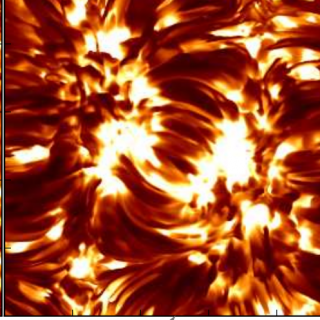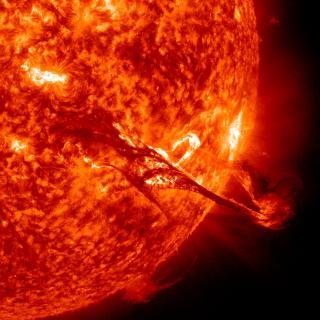Bibcode
Iglesias, F. A.; Asensio Ramos, A.; Sanchez, M.; Feller, A.
Referencia bibliográfica
Boletin de la Asociacion Argentina de Astronomia La Plata Argentina
Fecha de publicación:
8
2024
Número de citas
0
Número de citas referidas
0
Descripción
Current polarimetric calibration techniques derive the instrument modulation matrix by numerically fitting an instrumental model to measurements of a set of calibration Stokes vectors. These techniques are typically limited to an error on the retrieved normalized Stokes Q, U and V parameters, in the $1\times10^{-2}$ to $1\times10^{-3}$ range. This error commonly increases when the instrument response varies considerably across its field of view and/or when instrumental effects are present, which are not included in the assumed calibration model, such as camera non-linearity. We propose a new technique to calibrate Stokes polarimeters based on a model composed of fully-connected, multi- layer neural networks (NN's). This model is trained to learn the instrument modulation matrix given a set of input parameters, using the same calibration data that is acquired for the current techniques. The main advantage of our NN-based approach is its flexibility to incorporate instrumental effects for which no accurate model is available and, possibly through the fusion of data from other types of relevant calibrations, obtain a more accurate instrument response. We present a preliminary result of our model performance using synthetic data, where the ground truth is known.
Proyectos relacionados

Magnetismo, Polarización y Transferencia Radiativa en Astrofísica
Los campos magnéticos están presentes en todos los plasmas astrofísicos y controlan la mayor parte de la variabilidad que se observa en el Universo a escalas temporales intermedias. Se encuentran en estrellas, a lo largo de todo el diagrama de Hertzsprung-Russell, en galaxias, e incluso quizás en el medio intergaláctico. La polarización de la luz
Tanausú del
Pino Alemán

Magnestismo Solar y Estelar
Los campos magnéticos son uno de los ingredientes fundamentales en la formación de estrellas y su evolución. En el nacimiento de una estrella, los campos magnéticos llegan a frenar su rotación durante el colapso de la nube molecular, y en el fin de la vida de una estrella, el magnetismo puede ser clave en la forma en la que se pierden las capas
Tobías
Felipe García